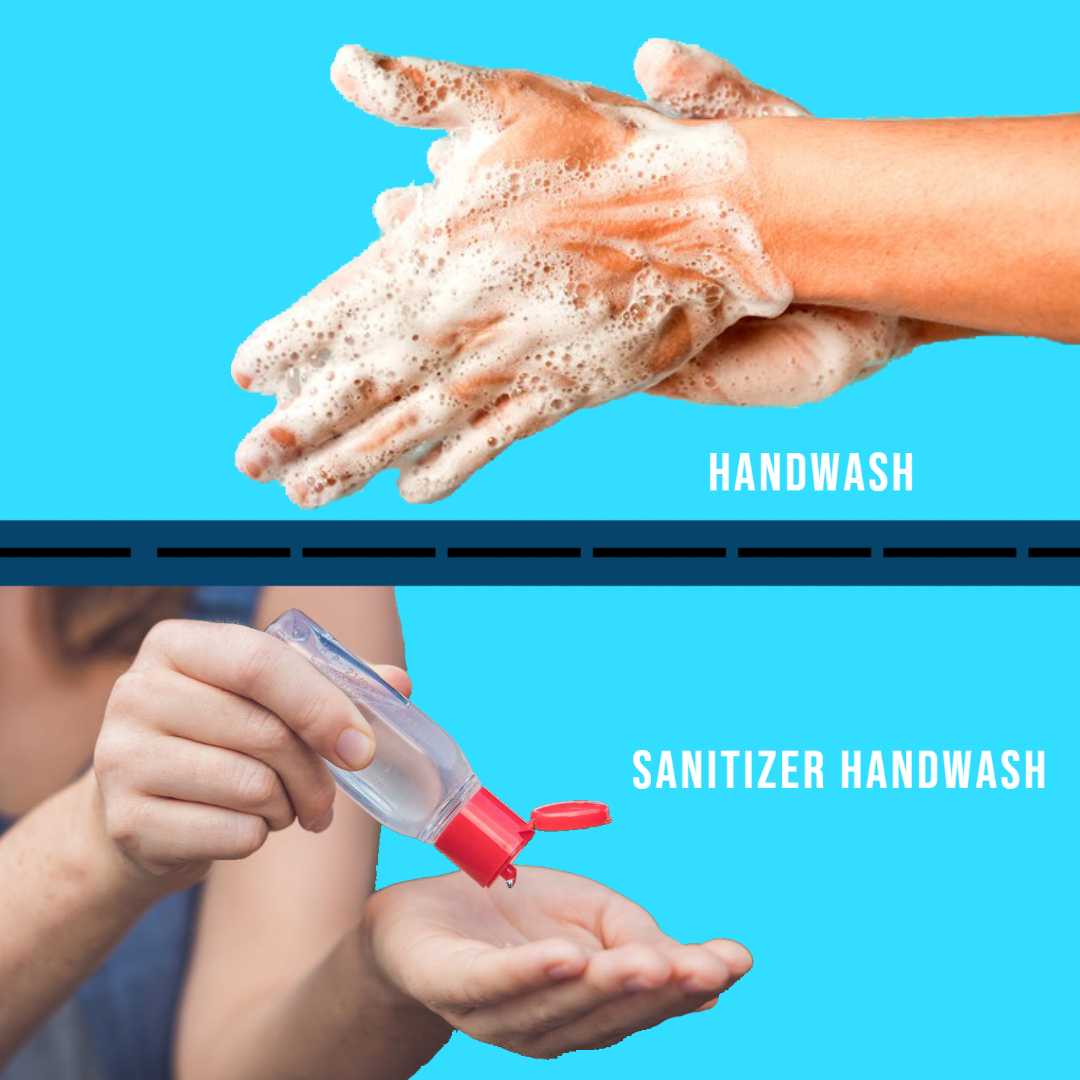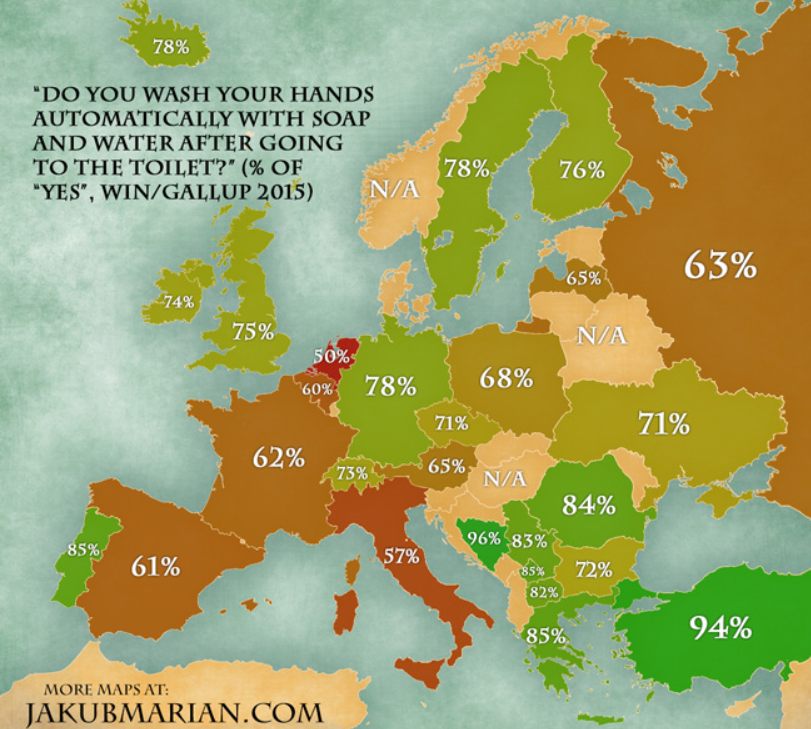Sanitation post-COVID 19: Tissue paper not in fashion, learn to wash
Tissue paper has failed COVID 19 test. The modern understanding of sanitation is passing through a stage of transformation. Those who used to feel proud of using tissue paper have been compelled to wash frequently their hands with soap. In the post-COVID 19 world, we will witness several consumer-friendly products providing an alternative to the tissue paper culture.

- Country:
- United States
Handwashing has witnessed strong resistance from modern sanitation practices in developed countries. However, highly contagious COVID 19 has forced communities throughout the world to wash their hands with soap. Today, the whole world is in a stage of sanitary and hygienic transition.
The novel coronavirus pandemic has changed the whole narrative of sanitation from tissue paper culture to wash culture. This ensuing reform in sanitation is going to change the narratives and trends of the sanitation sector. Besides, this change will also have an economic perspective from policy formulation to infrastructure to supply chain management. In the days to come, we will witness several new commodities and services in the sanitation sector to support and continue this change in sanitation.
The Pre-COVID 19 sanitation practices will not survive in the post-COVID 19 pandemic world. This is because, even if the virus is controlled with ensuring worldwide lockdown or medicine or vaccine is discovered, the fear of a new outbreak of the same virus or a new virus of the same contagiousness will continue to haunt the policymakers. Though less contagious, there were similar viral epidemics and pandemics in the recent past. The SARS Coronavirus (2003) outbreak in China and South-East Asian countries, Ebola epidemic in Africa (2013-16) and Ebola pandemic in Ethiopia (2019) had posed similar problems before sanitation and hygiene practices. As those epidemics and pandemics were confined to a region, they could not trigger such a huge global transformation.
The global research agencies often link handwashing practices with low per capita income and poor infrastructure facilities in developing countries. In such a report, the Institute for Fiscal Studies has analyzed the handwashing practices in relation to income thereby suggesting poor handwashing in countries with low per capita income. The narrative of the UNICEF is also focused on developing countries. A report of Water Aid, claiming 4 out of 5 persons on this planet do not wash their hands after using the bathroom, is also focused on lack of handwashing infrastructure in poor countries. There have been several communication campaigns in the developing countries to promote people for handwashing as a preventive or precautionary measure against the spread of infectious diseases spread through human to human touch.
Crisis for tissue paper culture of modernity
Despite higher per capita income, the handwashing practices in the US and European population are very low. A survey conducted by Gallup International in 2015 (at the time of the Ebola epidemic in Africa), is now being cited in several media reports to show a correlation between poor handwashing practices and high rate of COVID 19 infection and deaths in several European countries.
According to the report, 50 per cent of people in the Netherland and 33 per cent in Italy do not wash their hands after the toilet. Besides, only 61 per cent in Spain and 62 per cent in France accepted that they automatically wash their hands after washroom. A similar survey in the UK concluded that only 12 per cent of people wash hands before a meal. Even faecal germs were present on the hands of 26 per cent of participants in the survey. The hands cleaned only by tissue paper were found having as many germs as were present on park benches, escalator handrails, high chairs, and children’s ride-on toys, etc., said the researchers. Furthermore, a study from the US Department of Agriculture in 2018 revealed that 97 per cent of Americans don’t wash their hands before a meal which was a major cause of the outbreak in sanitation and hygeine related infectious diseases.
European countries having a low percentage of handwashing habits have a very high number of cases and casualties due to COVID 19 pandemic. The same is true for the US, Canada and other countries where handwashing is not a habit. They use tissue paper before and after eating, bathroom, toilet, cough and sneeze. As the virus is not killed by a swipe with tissue paper, they all became careers of the COVID 19. The human to human transmission, apparently, due to handshake and touch has been very high in these countries.

Sanitation in the Post COVID 19 world
It will be wrong to presume that scientists and authorities did not warn them. But the voice was not heard and followed so religiously before the COVID 19 pandemic. United States’ Center for Disease Control and Prevention (CDC) has dedicated an interactive page to promote the culture of handwashing among its people. The website also provides every required information, scientific studies and data to convince the people for handwashing.
It’s probably because people in developed countries are highly dependent on healthcare facilities, they avoid hand washing which one of the most effective ways of preventive healthcare. However, the reports highlight that the drug-resistant strains of bacteria, such as MRSA are responsible for 5,000 deaths per year in the UK and 25,000 deaths a year in Europe. Now due to the novel corona-virus pandemic the hospitals are overburdened and cities are facing unprecedented lockdown.
Handwashing Infrastructure
Throughout the world, hotels, restaurants, and eating points in modern cities do not encourage handwashing before eating snacks or having a meal. You will always find tissue paper napkins or towels to wipe your hands. The same is true in the toilets and bathrooms where the toilet paper are used prominently. It's now established that cleaning with tissue paper or paper towel will not clean the virus. The modern understanding and practice of using tissue paper are likely to be hit hard in the post-COVID 19 pandemic world.
There will be more focus on handwashing infrastructure and facilities. The agencies in Rwanda are installing portable handwashing facilities at public places. As sub-Saharan African countries were facing Ebola outbreaks, they seem to be benefiting due to preexisting sanitation campaigns aimed at change of habits. However, their problems are lack of water and resources but Europe is facing behavioural problems.
In a circular, the WHO has suggested to ensure regular supply of soap and water in the offices and other places. Besides, the clearly visible message for handwashing should also be displayed. Though not completely safe, the handwashing practices in Indian and Arabian cultures are better than a swipe with tissue paper. The handwashing with ash, which is prevalent in some communities of India particularly among rural women, is also considered almost equal to the handwashing with soap. However, it’s effectiveness is yet to be established in killing COVID 19. The change in the concepts of sanitation will provide a fertile market for the development of consumer-friendly commodities in this area.
Cleaning and Disinfectant Facilities
As the life of the virus is very long on the surface, it can contaminate your laptops, keyboards, mobile phones, purse, keyrings, chair and everything coming in the contact of the infected person. The WHO has advised cleaning all those things coming in the contact of infected persons with disinfectants. Besides, the water taps in the washrooms, commode and all other sanitary ware will be required to be sanitized properly.
The sanitary experts are most likely to focus on production and supply of disinfectants, cleaning instruments and other commodities as a measure to control any such epidemic in the future.
Contactless or Minimum Contact Sanitaryware
The censor equipped and contactless sanitaryware was being popular in the global market before COVID 19 pandemic. Now the studies are coming to suggest the presence of novel coronavirus in the faeces and urine as well, the WHO has suggested for safe disposal of human faeces and urine.
We can also expect more innovations in contactless sanitary ware. The presently popular commode model of toilet seat may not able to achieve the hygienic standards of post-COVID 19 world. Though good for personal or household use, this commode model provides contact with a large area of the human body. If any person is infected in an office, workplace or transport system such as flights etc will infect several others who use the same toilet seat.
Social Distancing Measures in Sanitation
The experts are suggesting to minimize contacts in social and official interactions. These suggestions are likely to change the seating arrangements in the social, public transport and official places. The new kind of arrangements will require a complete change in the existing infrastructure. Besides, additional sanitation arrangement will be required to deal with sick employees. The WHO has also suggested to maintain isolation homes in the offices to keep the COVID 19 patients until they are admitted in the hospitals.
The existing sanitation policies are based on lessons of London's cholera epidemic in the 1850s that emphasises on 'open defecation free' communities and robust sewer system. There has been a focus on covering marginalised section of population particularly women, physically challenged and mentally challenged persons by making policies and infrastructure more and more inclusive. The future policies on sanitation will be required to accommodate the lessons of COVID 19 pandemic as well.
For more news on COVID 19, please visit the LIVE DISCOURSE.
Centre of Excellence on Emerging Development Perspectives (COE-EDP) is an initiative of VisionRI and aims to keep track of the transition trajectory of the global development sector and works towards conceptualization, development, and mainstreaming of innovative developmental approaches, frameworks, and practices.
- READ MORE ON:
- COVID 19
- transform modern sanitation
- highly contagious COVID 19
- post-COVID 19 pandemic world
- Ebola epidemic in Africa
- tissue paper culture of modernity
- Gallup International
- Center for Disease Control and Prevention
- Handwashing Infrastructure
- Disinfectant Facilities
- Contactless Sanitaryware
- FIRST PUBLISHED IN:
- Devdiscourse

 COE-EDP
COE-EDP









